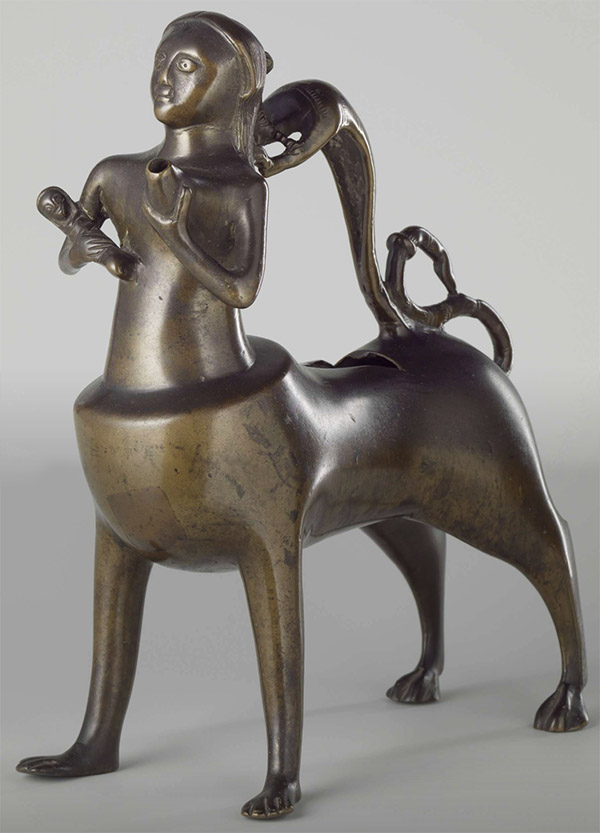I've mentioned how medieval scribes were doodling wemics in prayer books and how medieval masons were carving wemics into churches and abbeys. Well, it seems that medieval alchemists and smiths were crafting wemics into a special kind of pitcher or ewer, called an aquamanile, plural aquamanilia. These pitchers were most often lions, dragons, horses, and even equine centaurs. To make use of an aquamanile, you held out your hands, and another person would pour water so you could rinse off. They were used in churches as part of the mass, and at meals because in a time before silverware, frequent hand washing was nicer.
New York's Metropolitan Museum of Art (The MoMA) created a great short film that has examples and info on the process of making aquamanilia. Please enjoy!
You can learn more at the Wikipedia article on aquamanilia.
But let's get to the meat of it: Wemic Aquamanilia.
1) Aquamanile in the Form of a Dwarf Centaur From the online collection of The Walters Art Museum in Maryland, United States, this aquamanile was made in Germany, 1450-1500. It may indeed be dwarfish in its human part, but it is no traditional centaur. Look at its mane (depicted at the waist, as is traditional in Medieval representations). Look at the feet -- those are not hooves, but paws. Look at the tail, which is feline and ends in a floral burst, also typical of the way these creatures were represented back then. This is a true sagittary.

2) Aquamanile in the form of a centaur This aquamanile of unknown artist and no place of origin, was made around 1220-40, and now can be found in the Rijksmuseum in Amsterdam, the Netherlands. The description of this one, from the museum page, is interesting:
Centaur aquamanile of copper alloy. The object cast and embossed in cire perdue technique, in which the details are extended or engraved, has the shape of a female centaur. She wears a child wrapped in wraps on her right arm and with her left hand she holds up a large breast that serves as a spout. The front legs end in feet, the hind legs in claws. The S-shaped tail connects to a dragon that acts as a handle, which has its head and legs fixed in the hair of the centaur. In the head of the centaur, a flap fastened with a hinge has been cut out to be able to fill it with water.
However, I still say that this is a feline centaur. No mane at waist, yes, but female lions do not have manes, and this one is emphatically female. The dragon tail could mean anything. But look at the feet. Those are paws, not hooves. I call it feline, not equine!

3) aquamanile: centaur drummer with flautist, copper alloy, Hildesheim Thanks to Kornbluth Photography for the photo of this one; alas, I do not have any sourcing info on it. The etching at the waist suggests a mane, I think. The tail and feet look more feline than equine.
